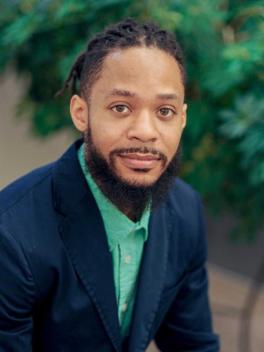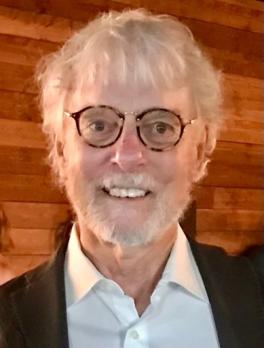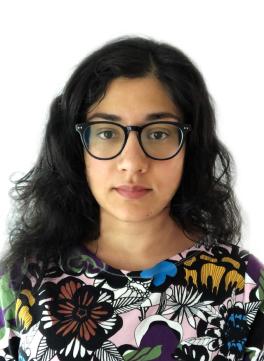
Terron Banner, PhD
Terron Banner received his Ph.D in Arts Administration, Education, and Policy from The Ohio State University. As an artist, he advocates for open access, just resource allocation, and culturally relevant decisions made in the arts administration and arts management process. As an educator, he supports culturally responsive teaching that accounts for the lived experiences of students and as a researcher he seeks to encourage more education reform discussions that are grounded in issues covering cultural diversity and socioeconomics.
Presentation Title: Reconceptualizing the “Urban” Arts Space: A Case Study in Arts Equity & Arts-Based Research
Abstract
Established in 2008, the Ohio State University (OSU) Urban Arts Space (UAS) “facilitates experimental galleries that adapt to the dynamic needs of Ohio State's arts curriculum and communities served.” The focus of this presentation is to understand how the needs of OSU’s art curriculum specifically, and the wider art field collectively, have intertwined and merged with the needs of the communities they are a part of. This synergistic dynamic has always been present, but has been magnified by war, racial and social unrest, and a global pandemic. By reflecting on its Juneteenth community programming, UAS provides an example of how arts-based research can promote arts equity and what an “experimental gallery” can look like in urban spaces.
Terry Barrett, PhD

Terry Barrett, Professor Emeritus, Department of Art Education, The Ohio State University earned a Master’s Degree and Doctorate in Art Education at Ohio State. He taught in the Department from 1972-2009.
He received a Distinguished Teaching Award from Ohio State, the Insight Award from the Society for Photographic Education, and is a Distinguished Fellow of the National Art Education Association.
Before his university work he taught art at Sumner High School in the inner-city environment of Saint Louis, Missouri. While at Ohio State he served for 23 years as an Art Critic-Education for the Ohio Arts Council in which capacity he engaged young and older learners in looking, talking, and writing about art that is contemporary and sometimes controversial.
He is former senior editor of Studies in Art Education. His books, articles, and anthology chapters are about teaching and learning contemporary art, photography, art criticism, and aesthetics with children and adults in school and community settings.
Presentation Title: “Reflecting on 50 Years of Research in Art Education”
Abstract
Years of qualitative research are embedded in practical scholarship in making, responding to, and teaching art, and writing, editing, and teaching art criticism. I’ve taught based on theory and have revised theory based on real world experiences in grade schools, high schools, universities, art museums, and in both professional and popular community venues.
Conceptual clarity and empirical practicality are guidelines. A hallmark of this work is interest in description (What do you see?) and interpretation (What’s it about?) more than judgment (Is it good?). Personal and social implications and consequences are crucial.
Criticizing Photographs is written to teach about making and responding to photographs. Criticizing Art is concerned with reading and writing professional criticism and the intertwining of the knowledge and practice of art critics who consider contemporary art. Interpreting Art considers how meaning is made of both historical and recent art that is found in museums and in popular culture. Why Is That Art? triangulates practices of recent artists, professional critics, aestheticians. It shows that judgments are based in criteria supported with reasons beyond mere preferences.
Making and responding lead to Talking About Student Art, a participant research project with children and high school students that increased the amount of student dialogue about art, and changed the focus from a student talking about their own art to students exploring work made by their classmates.
CRITS emphasizes descriptions and interpretations and expands critiques from instructor dominated discussions limited to aesthetic concerns to social consequences among a supportive community of artists.

Ramya N. Ravisankar, PhD
Ramya Ravisankar is a multidisciplinary artist, educator, and administrator. Her artmaking and research practice are framed through her South Asian heritage, interest, and knack for technology, posthumanist, and new materialist philosophies, contemporary artmaking practices, and post-qualitative and experimental research/artmaking. She is also interested in decoloniality and ethnobotany, especially how plants shape environments and people. Ramya’s recent thinking and artmaking practice includes presenting at an Adobe Educator’s conferences and group exhibitions at Blockfort in Columbus and the Jamaica Center for Arts and Learning in New York with South Asian Women’s Creative Collective and building a new computer with rainbow lights with her family. Additionally, please look for her chapter in the forthcoming book Counterrnarratives from Asian American Art Educators: Identities Pedagogies, and Practice beyond the Western Paradigm. Ramya, with Dr. Koo and Dr. Bode, will be presenting, Countering Anti-Asian Racism: Telling Little Stories to Disrupt Meta-Narratives at NAEA 2023.
Presentation Title: What happens next: Complicating an already complex research
Abstract
Scholars often veer away from their dissertation research, but that has not been the case for me. This presentation is a continuation and expansion of what I explored previously; it comforts me that these ideas are so complex that there will never be any tidy resolution. Notions of entanglement and diffraction still guide my work. Entanglements are intra-relations of humans and non-humans described by Barad. Diffractions elaborated by Barad, Haraway, van der Tuin, and others are a way to engage with the interferences and differences brought forward by reading insights through one another. I look to diffraction as a methodological outlook through which to attend to entanglements, interferences, and convergences. Recently my interests have expanded to include ideas of decoloniality, specifically pluriversality, and indigenous ways of knowing pertaining to ethnobotany. Diffracting these ways of knowing and being through artmaking brought forward compelling questions that I share in this presentation. Through a series of collaborative works, we explored notions of healing, distance, and ritual in response to the COVID-19 pandemic. The artworks materialize through care and respect for my collaborator and the materials through which we work. We diffractively explore the entanglements through performance, knitting, plant material, conversation, and writing, which shape our understanding of the theories that frame our interaction.
